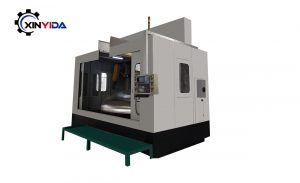CNC (Computer Numerical Control) polishing machines have revolutionized the manufacturing industry by providing precise and consistent surface finishing for a variety of materials. The polishing process not only enhances the aesthetic appeal of products but also improves their functionality and longevity. In this article, we will explore the polishing process of CNC polishing machines, highlighting its significance, methodology, and the benefits it offers to manufacturers.
What is CNC Polishing?
CNC polishing refers to the automated process of smoothing and finishing the surface of a material using computer-controlled machinery. Unlike traditional polishing methods, which rely heavily on manual labor, CNC polishing machines utilize advanced technology to achieve higher precision and efficiency. These machines are capable of polishing a wide range of materials, including metals, plastics, and ceramics, making them versatile tools in various industries, such as automotive, aerospace, electronics, and jewelry.
Importance of CNC Polishing
The polishing process is essential for several reasons:
Enhanced Aesthetics: Polished surfaces are visually appealing and often shine, making them desirable in consumer products. For example, polished automotive parts not only look better but can also increase the vehicle’s resale value.
Improved Functionality: Smooth surfaces reduce friction and wear, enhancing the performance of mechanical parts. For instance, polished gears in machinery operate more efficiently due to lower resistance.
Corrosion Resistance: A well-polished surface is less prone to corrosion, which is crucial in industries where products are exposed to harsh environments. Polishing creates a barrier that protects materials from moisture and contaminants.
Surface Preparation: Polishing is often a preparatory step for further finishing processes, such as plating or coating. A smooth surface ensures better adhesion of additional layers.
The CNC Polishing Process
The CNC polishing process can be broken down into several key steps:
1. Design and Programming
The first step in the CNC polishing process is designing the part to be polished. Using CAD (Computer-Aided Design) software, engineers create a detailed model of the component, specifying dimensions, tolerances, and surface finish requirements. Once the design is complete, the CNC machine is programmed using CAM (Computer-Aided Manufacturing) software. This programming defines the polishing parameters, including tool paths, speeds, and feed rates.
2. Material Selection
The choice of material plays a crucial role in the polishing process. Different materials require specific polishing techniques and tools. For example, metals like aluminum and stainless steel can be polished using abrasive pads, while plastics may require softer, non-abrasive materials to avoid scratches. Understanding the material properties is essential for achieving the desired finish.
3. Preparation of the Workpiece
Before the actual polishing begins, the workpiece must be prepared. This includes cleaning the surface to remove any contaminants, such as dirt, grease, or oxidation. Proper cleaning is vital as any residue can affect the polishing results and lead to an uneven surface finish.
4. Polishing Setup
Once the workpiece is ready, it is securely mounted on the CNC polishing machine. The setup involves selecting the appropriate polishing tools, such as abrasive wheels, pads, or belts. The choice of tool depends on the material and the desired finish. Additionally, the machine settings are adjusted according to the specifications outlined in the programming stage.
5. Polishing Process
The actual polishing process begins after setup. The CNC machine operates according to the programmed parameters, moving the polishing tool across the surface of the workpiece with precision. The machine’s ability to maintain consistent speeds and pressures ensures uniform results. Depending on the material and desired finish, the process may involve multiple passes, gradually using finer abrasives for a smoother surface.
6. Quality Control
After the polishing is complete, quality control measures are implemented to ensure the finished product meets the required standards. This may involve visual inspections, measuring surface roughness, and conducting functional tests. Any defects identified during this stage may necessitate re-polishing or additional finishing processes.
7. Final Touches and Finishing
Once the quality checks are complete, the polished workpiece may undergo additional finishing processes, such as coating or plating, to further enhance its properties. Final cleaning is also performed to remove any residues from the polishing process.
Benefits of CNC Polishing
CNC polishing machines offer several advantages over traditional polishing methods:
-
Consistency: CNC machines provide uniformity in polishing, ensuring that every part receives the same level of treatment, which is particularly important in mass production.
-
Efficiency: The automation of the polishing process reduces labor costs and increases production speed, allowing manufacturers to meet tight deadlines.
-
Precision: CNC technology allows for highly accurate polishing, minimizing the risk of human error and ensuring that tolerances are maintained.
-
Versatility: CNC polishing machines can be programmed for various materials and finishes, making them adaptable to different manufacturing needs.
Conclusion
CNC polishing machines play a vital role in modern manufacturing by delivering high-quality surface finishes with precision and efficiency. The polishing process not only enhances the aesthetic appeal of products but also improves their functionality and durability. As technology continues to advance, CNC polishing will remain an essential component of the manufacturing landscape, providing businesses with the tools they need to compete in today’s market. By understanding and optimizing the polishing process, manufacturers can achieve superior results and elevate the quality of their products.

